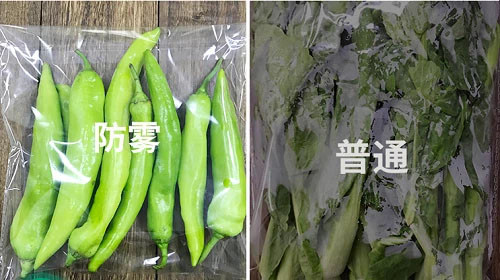
Product Categories
Contact Us
Why use antifogging agent?
Transparent plastic film, sheet or plate will condense a layer of fine water droplets on its surface when the humidity reaches below the dew point in a humid environment, which makes the surface fuzzy and atomized, which hinders the transmission of light waves. For example, when packaging products with film, the contents can not be seen due to fogging, and the generated fog droplets are easy to cause rot and damage of the contents. Therefore, in order to improve the service life of products, it is necessary to add a certain amount of antifogging agent.

What is a plastic antifogging agent?
Antifogging agents are surfactants with hydrophilic groups, which can be oriented on the plastic surface, with hydrophobic groups inward and hydrophilic groups outward, so that water can easily wet the plastic surface, and condensed fine water droplets can quickly spread to form a thin water layer or large water droplets flowing down the film. In this way, atomization caused by light scattering of small water droplets can be avoided, and condensed water droplets can be prevented from falling on the packaged object and damaging the packaged object.
The chemical composition of antifogging agent is mainly partial ester of fatty acid and polyol. Commonly used polyols are glycerol, sorbitol and their anhydrides, commonly used fatty acids are saturated or unsaturated acids of C11 and C12, and fatty acids with more than 24 carbon atoms can also be used. Generally speaking, esters of medium-chain fatty acids have good antifogging effect at the initial stage; Long-chain fatty acid ester has good long-lasting antifogging effect. In fact, antifogging agents are often mixed esters of various acids, and many fatty acid esters of polyols lack hydrophilicity. Through the addition of ethylene oxide, the hydrophilicity can be improved, and the initial antifogging and low-temperature antifogging properties can be increased.
Classification of antifogging agents
Types of plastic antifogging agents According to the way antifogging agents are added to plastics, antifogging agents can be divided into two types: internal adding type and external coating type.
Internal anti-fogging agent: it is added to the resin when blending, which is characterized by hard loss and long-lasting efficacy, but it is difficult to obtain good anti-fogging property for polymers with high crystallinity (such as PET and PS);
Externally coated antifogging agent: After being dissolved in organic solvent or water, it is coated on the surface of plastic film, which is simple and low in cost, but has poor durability and is easy to be washed away or wiped off. It is only used when the internally added antifogging agent is ineffective or does not require durability.
Performance requirements of antifogging agent
The efficacy of antifogging agents can be divided into four types: initial antifogging, lasting antifogging, low-temperature antifogging and high-temperature antifogging. It is difficult for one antifogging property to have four effects at the same time. Usually, according to the requirements of the film for antifogging effect, several kinds of antifogging properties are selected to be used together.
Antifogging agent shall have the following properties
1, high anti-fog efficiency, quick effect and good durability;
2, the thermal stability is good, and it is not easy to be decomposed by heat, and the decomposition product does not lead to the degradation of the polymer;
3, good compatibility with other additives, and does not interfere with the functions of other additives;
4. It does not affect the transparency, electrical properties, adhesion, pollution resistance and other functions of the film.
Characteristics and application of several commonly used antifogging agents
1. Glycerol monooleate, a white wax, can be used as an internal antifogging agent. It has good initial antifogging and low-temperature antifogging, and is suitable for food packaging films. The general dosage is 1-1.5 parts in polyethylene and 0.5-1 part in polyolefin.
2. Sorbitan monopalmitate, a yellow granular substance, is an internal antifogging agent, which takes effect quickly and permanently, and its dosage in PVC is 1~1.7 parts.
3. Sorbitol monostearate is also an internal antifogging agent. It is a yellow granular solid with a melting point of about 60℃, which has a long-lasting effect. It is often used in agricultural films and can also be used as food packaging materials. Its dosage in PVC is generally 1.5~1.8 parts, and in polyvinyl acetate it is 0.7~1 part.
4. Polyethylene oxide glycerol monostearate is also an internal antifogging agent, which takes effect quickly and has good initial and low temperature antifogging properties. It is a light yellow liquid, and also has antistatic effect, which is suitable for food packaging film. The general dosage is 1~1.5 parts in PVC and 0.5~1 part in polyolefin.

20 years experiences textile machine manufacturer and exporter
